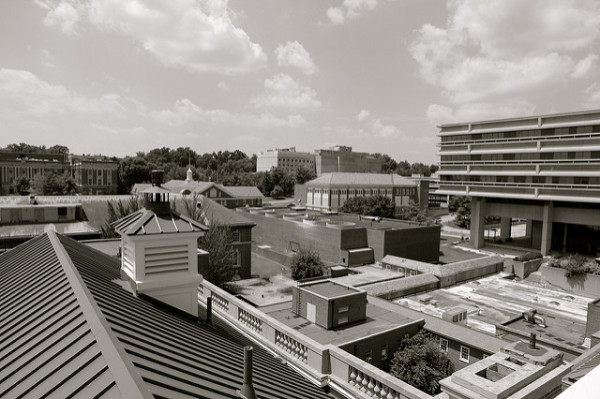Warning: Graphic images.
“Mike Stamford: I heard you were abroad somewhere getting shot at. What happened?
Dr. John Watson: I got shot.” – Sherlock (BBC)
College counselor, Clara: “During my time working with college veterans, I have deeply felt that there are three ‘one-percents’ prevalent in society.
“There’s the one percent that we hear on the news, about Wall Street. Then there is the one percent of people in the entire world with a four-year degree*. Finally, you have the one percent of all Americans who are veterans.**”
“My experience has shown me that these these groups are very different. The wealthiest get a lot of media attention. The job of the educated one percent is to bring to light many issues in this world. The last group, veterans, are typically known as the ‘invisible one percent’.”
“It is the job of the educated one percent to bring attention to the invisible one percent.”
Image Source: Smith Collection/Gado.
Hiroshima. Dispatches. The words meted out by these pieces of new journalism reek self-awareness. They reek of the awareness of language’s utter failure to capture the true horror of war.
So much of the battlefield, anyway, is the wordless silence before enemy engagement.
You are poised in the sand, ready to fire at the slightest click of the trigger. Sand. They did not tell you before you came here how much sand there would be, how it slips through seams you did not know existed, clings to the corners of your eyes and the cracks between layers of camouflage. It squirms in, the way that troops have slipped into rocky crevices. One of the smallest enemies, sand flies, may also squirm in and bite you to inflict leishmaniasis, an infectious disease that often leaves scars and residual malaise during the healing process. You have seen cutaneous disfigurations in some comrades, and thank the stars it is not you.
The sand is everywhere, as is the anticipatory silence.
You are a fine-tuned machine. They tell you to fire. You tell your unit to fire.
You are a machine. Then you get shot.
You get shot, and things happen when you pray, Oh God, or Allah, or whatever deity you ascribe to, let me live. The sheer fleshiness of your body reveals itself to you in the spray of blood that clogs your throat. The wound hurts, but people over you are dimly shouting nonsense that the bullet must remain in you until they can stem the flow.
During the few seconds that you pray, the other parts of the “military machine” you used to belong to come to rescue you.
A combat medic, in that moment, floats down from a helicopter. He’s been trained as a parachutist for this moment that you might be bleeding out into the sand. He’s been training, ever since he signed up, advancing through fitness and written tests. He sat through modules of human anatomy and physiology, attended sixteen weeks of specialized training with hands-on sessions on live sedated animals, and learned how to set up an emergency IV with only the materials given to him by Nature and in his bag, so that when this moment came, he would be able to keep your body functioning.
Image Source: Frank Rossoto Stocktrek.
The combat medic’s function is not to save lives, but to sustain them. It is not to repair your biological systems, quickening heartbeat, wheezing trachea, increasingly clammy skin, and haywire endocrine signals, but rather to keep these systems running. The combat medic’s job is the first response, the first line of aid. He must keep your body in recoverable conditions for the first seven golden minutes until EMTs can hoist you onto a gurney to a military hospital. If they deem your injury so serious that you cannot become a machine again — if wounds prove your biological machinery too broken — then they will send you to Walter Reed National Military Medical Center, the receiving bay of all critical military patients to be shipped back home.
You got shot. The medical personnel of the military intervened to preserve you. You used to be a machine, and now you’ve been cruelly reminded of your humanity yet again.
Specific references including sand pertinent to U.S. military operations, Operation Enduring Freedom in Afghanistan and Operation Iraqi Freedom in Iraq. The “Invisible One Percent” has been used to refer to the proportion of all Americans who are veterans, though with the wars winding down the actual numbers come closer to three percent.










